This post has been brought to you by San Felice. All opinions expressed are my own. The following message is intended for those 21+. Please enjoy responsibly.
Today we’ll be taking a look at San Felice’s Il Grigio de San Felice Riserva, which is classed as a Chianti Classico. Naturally, this wine comes to us from Tuscany, Italy.
First up, we’ll cover what makes Tuscany such a gem when it comes to winemaking. After that, we’ll sample the wine itself, and we’ll close off with some pairing suggestions that I think will really make this particular bottle shine.
The Where – Tuscany (Chianti DOCG), Italy
San Felice’s ‘Il Grigio’ comes to us from Tuscany, which is arguably the most iconic wine region within Italian winemaking – which in turn makes it “One of the most iconic regions in ‘all’ of winemaking.”
In turn, the Chianti DOCG, (Denominazione di Origine Controllata e Garantita, or Denomination of Controlled and Guaranteed Origin), is the single best-known Italian wine region within Tuscany, and not without good reason. Chianti, produced from Sangiovese grapes, is recognized for its assorted cherry aromas and flavors, along with pleasantly contrasting savory notes, rich acidity, and full tannins. The first Chianti wine zone dates back over three hundred years to 1716 courtesy of Grand Duke Cosimo Medici. Recognizably ‘modern’ Chianti, the ‘style’ or blending of Sangiovese that we all know and love today, dates back to the 1800s, courtesy of Barone Ricasoli of the Castello di Brolio winery.
Outside of the Chianti DOCG, Tuscany is divided across a whopping forty-one DOCs and 11 DOCGs, Italy’s regional classification system, which regulates how and where wines are made. Aside from production methods and geography, this classification system also sets rigid quality standards, including but not limited to standardized taste testing.
However, despite the literally dozens of specified production areas and methods into which Tuscany is divided, the bedrock of Tuscan winemaking is a single varietal – Sangiovese. Sangiovese so dominates the region that it is almost impossible to talk about Tuscan winemaking without giving mention to the grape that produces the dry red wines for which Tuscany is famous. Prized for its high acid, ‘pleasantly firm’ tannins and balance, a quality wine based on Sangiovese will evoke images of ripe dark cherries and black stone fruit, perforated with stark herbal notes. Chianti, Vino Nobile di Montepulciano, and Brunello di Montalcino (all of which we’ve reviewed here on Living the Gourmet), are just a few of the world-renowned wines produced from Sangiovese.
However, Sangiovese is assuredly ‘not’ the beginning and end of the story of Tuscan winemaking. For example, the 1970s saw the rise of ‘Super Tuscans,’ an unofficial term used to describe several high-quality Tuscan wines that were – for one reason or another – excluded from receiving DOC or DOCG status by breaking traditional Italian winemaking norms. Regardless of local labeling, a number of these wines achieved critical acclaim, as well as commercial success, and ended up becoming ‘cult wines’ that commanded high prices. Over the ensuing decades some of these ‘Super Tuscans’ were granted DOC or DOCG status – although it can be argued that such status detracted from their ‘cult’ mystique as ‘rogue labels.’ Aside from the controversial ‘Super Tuscans,’ other wines have also seen success across Tuscany, such as Syrah, Merlot, and Cabernet Sauvignon.
Tight regulations and quality standards aside, climate is perhaps the foremost factor in Tuscany’s success. The region’s warm and temperate coastline is flanked by inland hillsides and mountains, which help temper the region’s searing summers, which in turn contributes to increased temperature variation. This temperature variation between the hills, mountains, and warm coastline help balance the sugars and acidity of the region’s grapes. Sangiovese performs best when it receives maximum direct sunlight, and as such the hilly terrain of the region is almost tailormade for this grape, with the majority of area’s vineyards being planted at elevations of between some five-hundred and sixteen-hundred feet. This higher elevation further increases temperature variance, which further increases the balance in sugar and acidity.
The Bottle – A Showcase
Today we’re reviewing the San Felice’s Riserva Il Grigio Chianti Classico.
Aromatics and Tasting – The Review
Il Grigio introduces itself with notes of oak and ripe red fruit off the top of the glass. Think sliced cherries, syrupy raspberry, and toasted oak. Something earthy makes itself known deeper into the glass, with hints of smokiness, framed in plentiful red fruit. The oak persists throughout. On second whiff, tobacco leaf and cracked leather comes to the fore. On the palate, the red fruit carries over quite nicely, with plentiful tannins, carried on a medium body with low acidity. Very pleasant.
What to Eat – The Pairings
All of the ‘standard’ chianti pairings work with this particular Chianti Classico. To complement this wine, you want rich, heavy, and meaty entrees. The best pairing, by far, would be something along the lines of a prime rib prepared with a curry and cayenne-based rub mixed with garlic, coriander and cumin. If you want something a bit more festive, beef tacos are another great pairing, particularly with a medley of Mediterranean flavors, such my “Greek Style Tacos.” To really play to the ‘heavy and meaty’ side of this wine, you might also consider an herb roasted rack of lamb, prepared with a mix of honey, oregano, garlic, and basil. Seared beef steaks, shark steaks, spicy barbecue, and red sauces over pasta, are all potential pairings.
2
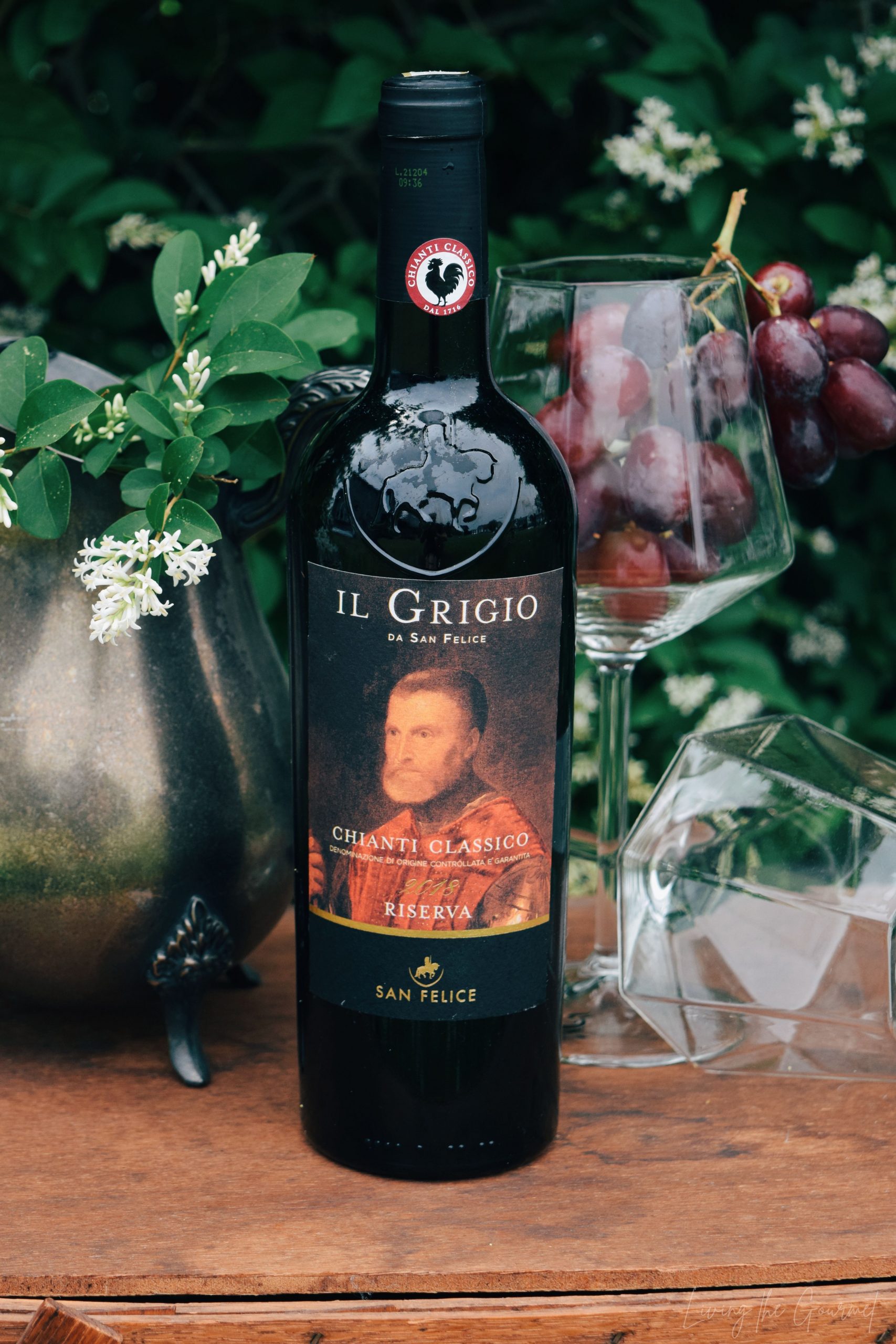
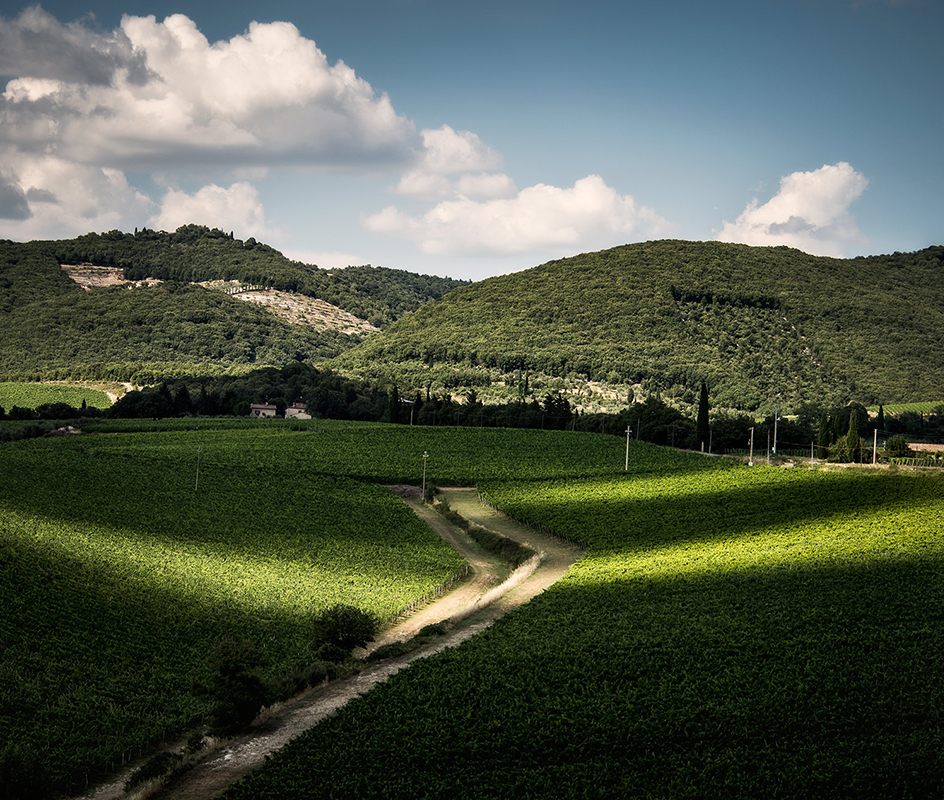


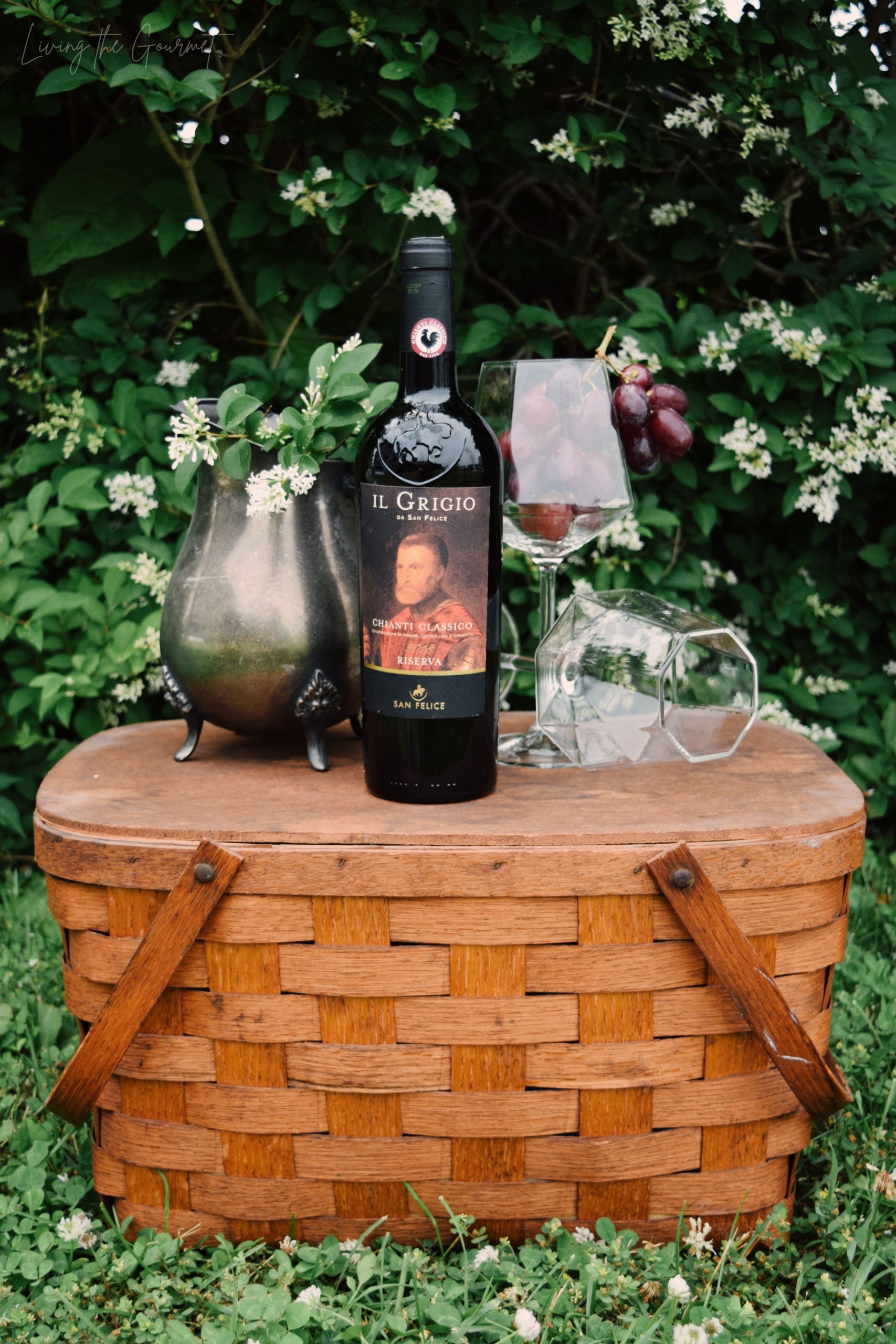
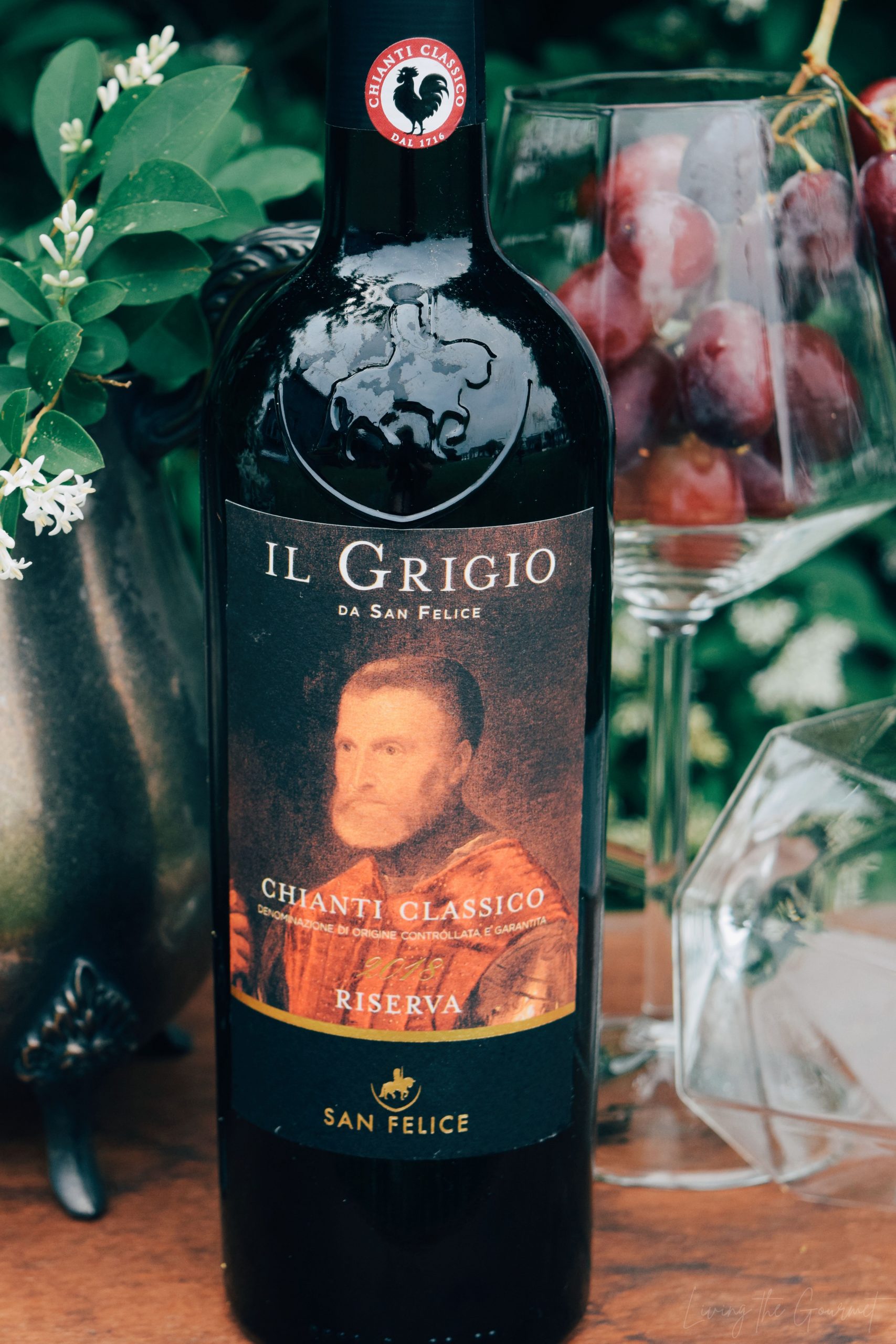
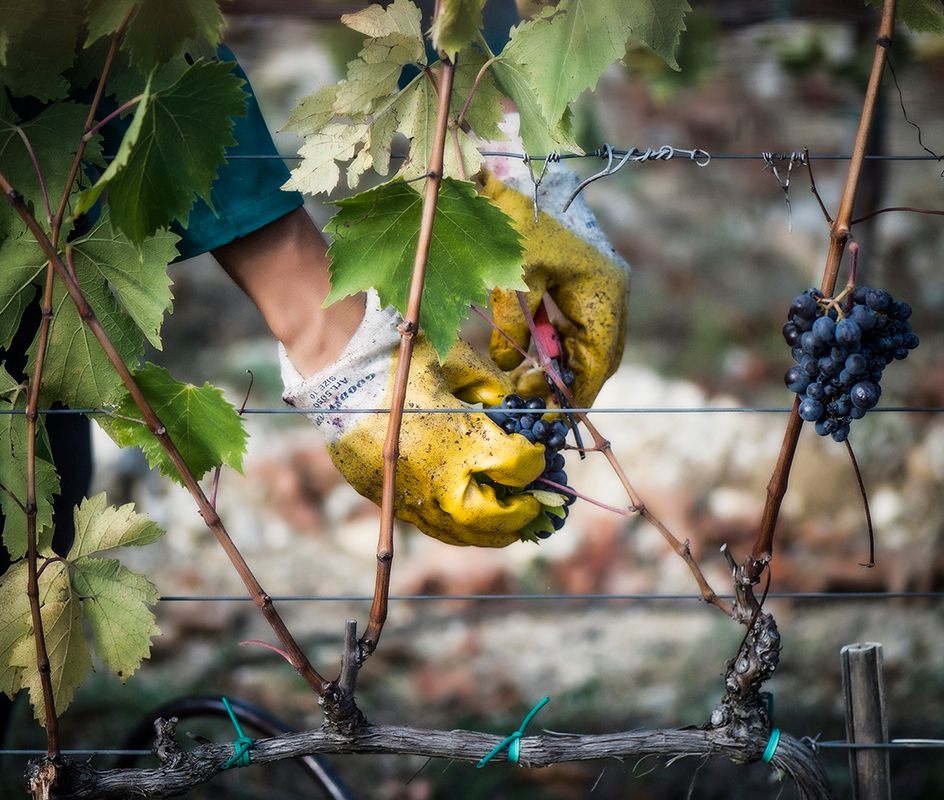
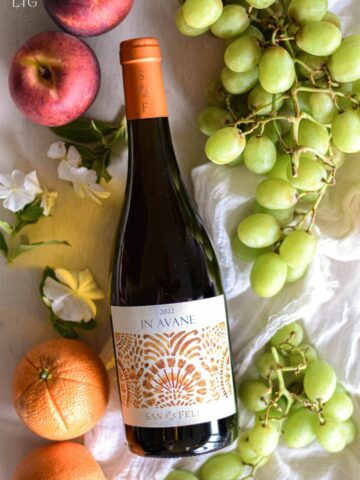
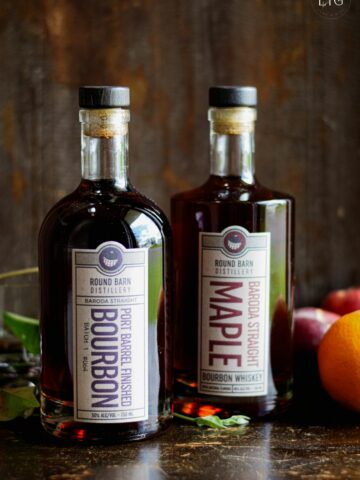

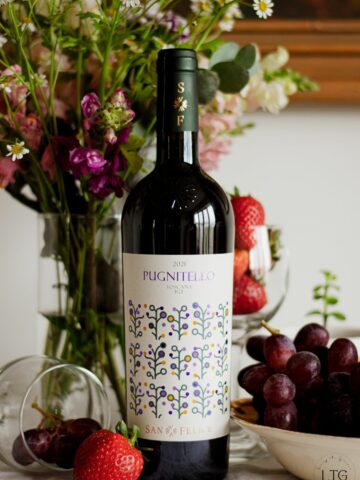
Beth says
I'm not surprised this wine is amazing. I mean, just look at that vineyard! I'd love to try some.
Stephanie says
I didn't know there are so many regions in Tuscany when it comes to wine. Sounds like you made a great choice in wine here!
Samantha Donnelly says
I do like a nice glass of wine, but I am terrible for knowing what is a good wine or not, I go on whether I can drink it. This does sound like a lovely wine to drink
Talya Stone says
I do love an Italian red and especially Chianti. I was in Italy not long ago and was in heaven drinking their wine there. Totally no competition!
Mosaic Borders says
I've never been to Chianti, we wanted to go a couple of years ago, right before the start of the pandemic. I can't wait to try out this wine, i bet it is delicious...
Natalie says
I am not a big fan of wine but I must say the Italian wine I have tried has been outstanding. I need to look out for this one!
Risa Lopez says
I love wines and this one looks so good. I will check this out.
Marysa says
What a beautiful place and lovely vineyards. Sounds like a great line of products!
Lavanda Michelle says
Super cool information, I'd love to try this wine. I bet me and my friends would love it, and we can also try the taco combination. Thanks for sharing!
Cynthia | What A Girl Eats says
Love! My daughter just returned from Florence where she was studying for 4 months. She loved it there and is a Chianti lover now.
Rosey says
I'd like to go TO where that wine came from. A trip to Tuscany is in my future!
Yeah Lifestyle says
Such a beautiful looking bottle and I can't wait to try at this Tuscany wine with my roast lamb dish, especially after reading about it
Stacie says
I spent years working in Italian restaurants. Sangiovese is one of my favorites!
Jupiter Hadley says
Finding a wine for meaty and heaty meals is something I struggle with! Thank you for sharing this perfect pairing.
Lily says
I need to go to a winery now. This looks like a lovely brand and delicious.